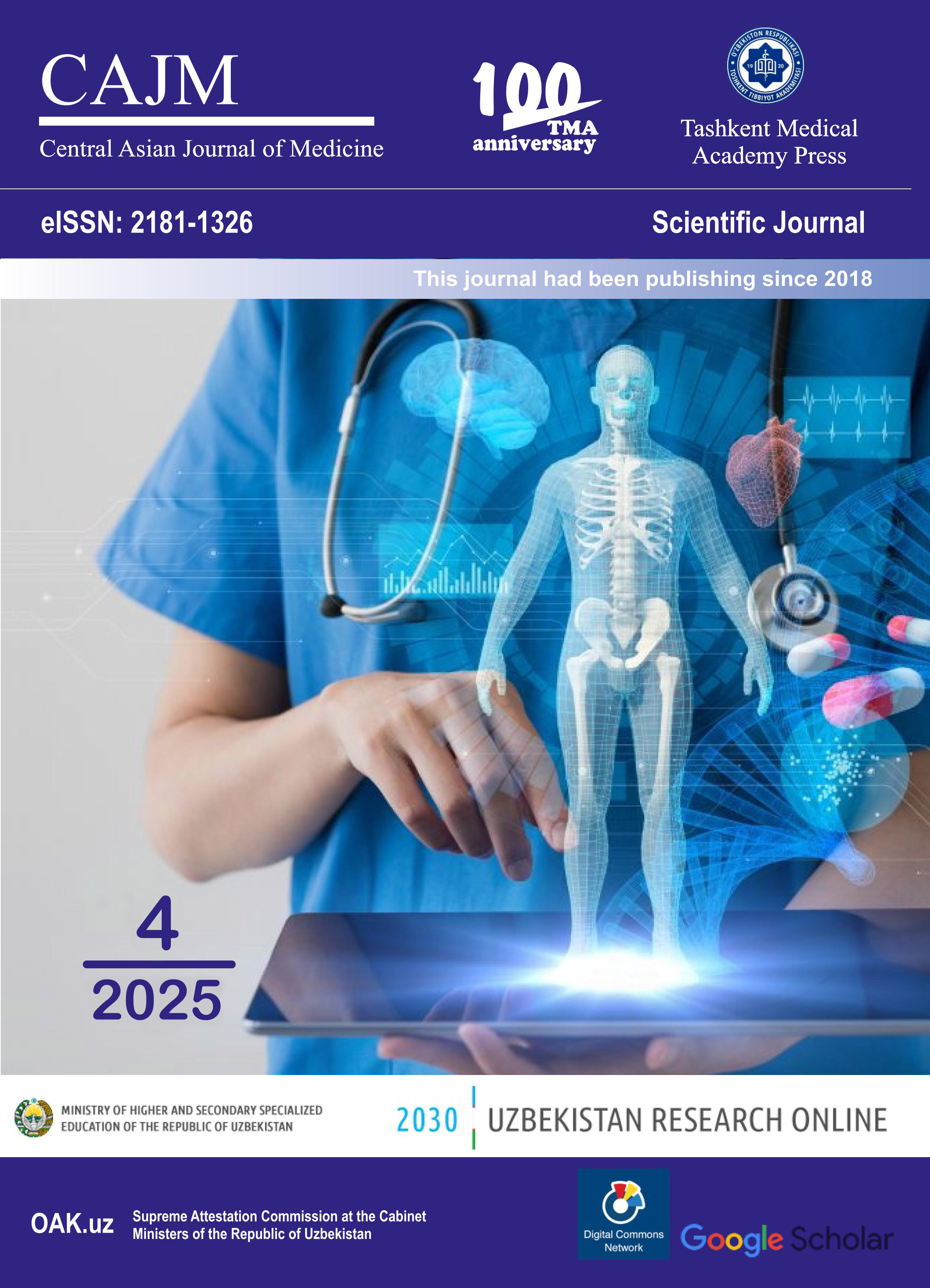STUDY OF P-SELECTIN LEVELS AND HEMOSTASIS GENES GENETIC POLYMORPHISMS AMONG PATIENTS WITH GOUT
Keywords:
Gout, P-selectin, Hemostasis, Gene polymorphism, MTHFR C677T, F5 G1691A, F2 G20210A, PAI-1 4G/5G, Thrombosis, Endothelial dysfunction, Platelet activation, Hyperuricemia.Abstract
Gout is a metabolic and inflammatory disorder characterized by hyperuricemia and crystal-induced arthritis, often accompanied by an elevated risk of cardiovascular events and thrombosis. P-selectin, a marker of platelet activation and endothelial dysfunction, has been implicated in thrombotic processes. Genetic polymorphisms in hemostasis-related genes may contribute to both hyperuricemia-related inflammation and thrombogenic potential. The objective of this study was to investigate P-selectin levels and common genetic polymorphisms in MTHFR, F5, F2, and PAI-1 genes among 80 patients with gout and 20 healthy controls to assess their combined role in increasing thrombotic risk. Plasma P-selectin levels and genotypic variations in MTHFR C677T, F5 G1691A, F2 G20210A, and PAI-1 675 4G/5G were analyzed in a cohort of gout patients (n = 80) and healthy controls (n = 20). Enzyme-linked immunosorbent assay (ELISA) was used to quantify P-selectin. Genotyping was conducted using TaqMan PCR. Statistical correlation analyses were performed to determine the relationship between elevated P-selectin levels and the presence of high-risk genotypes. Gout patients exhibited significantly elevated P-selectin levels (range: 0.01–3.58 ng/mL), with many exceeding the normal threshold (0.30 ng/mL), compared to controls (0.02–0.18 ng/mL). High-risk genotypes were notably more frequent among gout patients: MTHFR TT (13%), F5 AA (5%), F2 AA (22%), and PAI-1 4G/4G (62%). Correlation analysis showed a moderate positive relationship between P-selectin levels and genetic polymorphisms (r = 0.378, p = 0.00036), with R² = 0.143. Elevated P-selectin levels in gout patients are moderately associated with thrombosis-related genetic polymorphisms, suggesting an interplay between genetic predisposition and thrombo-inflammatory processes in gout.
References
Chiu CC, Chen YT, Hsu CY, et al. Association between Previous History of Gout Attack and Risk of Deep Vein Thrombosis. Sci Rep. 2016; 6:26541.
Cicero AFG, Fogacci F, Borghi C. Uric Acid and Thrombotic Risk: An Emerging Link. Intern Emerg Med. 2020; 15:1167-1168.
Darlington G, Scott JT. Platelet adhesiveness in gout. Postgrad Med J. 1973; 49:24-28.
Fang J, Alderman MH. Serum Uric Acid and Cardiovascular Mortality. JAMA. 2000;283(18):2404-2410.
Krishnan E, et al. Gout and the Risk of Acute Myocardial Infarction. Arthritis Rheum. 2006; 54:2688-2696.
Halperin Kuhns VL, Woodward OM. Sex differences in urate handling. Int J Mol Sci. 2020; 21:234.
Huang CC, Huang PH, Chen JH, et al. Risk of Gout on Deep Vein Thrombosis and Pulmonary Embolism. Medicine. 2015; 94:e2140.

